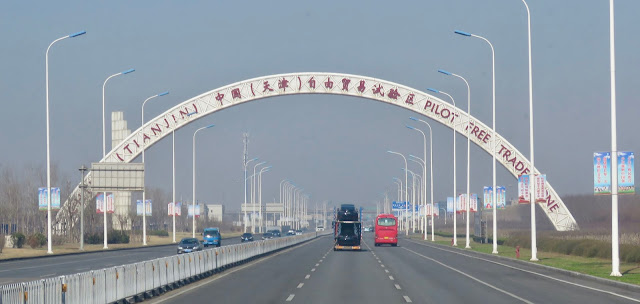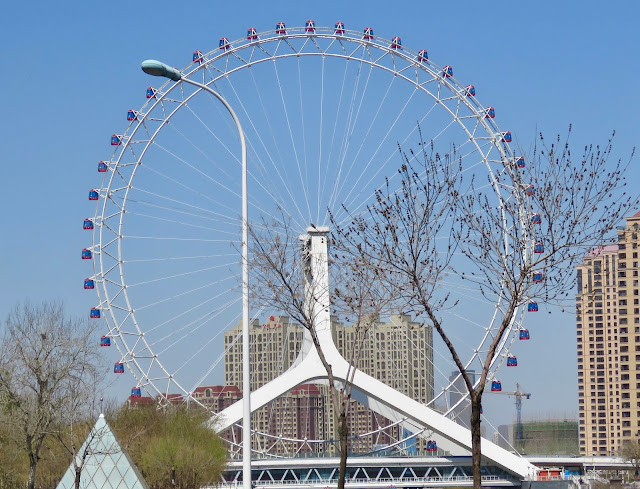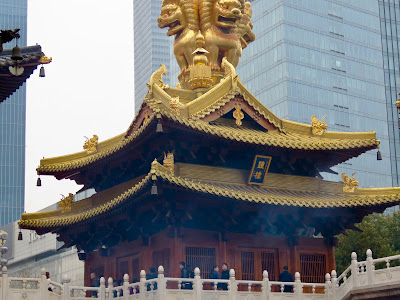Nagasaki, Japan
Today in Nagasaki, our first port after leaving China. The weather has warmed up a little and I did see a few cherry blossoms, but most of what I saw this afternoon were grim reminders of why Nagasaki is an important shrine. But first I will give a brief report on my day in Tianjin--brief because it really doesn't merit much more from the tourist.
Monday, 25 March 2019
Tianjin, China
Tianjin, a city of over ten million souls, is noted mostly for its location. Only 90 minutes from the port area (where there is literally nothing to see, except a very wide highway with very little traffic, and large industrial buildings lining the sides of the road). And once you reach Tianjin, it's still another two hours travel time to Beijing. Holland America offers several different ways of getting to Beijing, including an overnight excursion that is way too expensive (especially for a solo traveler, at $1200. a pop); or a free shuttle bus to a mall located about 30 minutes outside Tianjin, where one can take the metro into Tianjin to connect to the high-speed train to Beijing; or not quite as expensive, relatively as the overnight tour, one-day excursions to Beijing that leave in the wee hours of the morning and do not return to the ship until late at night, and which involve at least six hours of driving (if traffic is light).
 |
| Port to Tianjin Highway |
 |
| Recently-Built High-Rise Apartment Buildings Crowd the Suburban Tianjin Skies |
for local transportation and hotel in the city so that the six hour coach ride is split up into two days. For many travelers, including
some of the Westerdam's crew, this visit was a once-in-a-lifetime experience. I am content with my memories (and my photos) of the four wonderful days Will and I spent in Beijing in 1994. I might even post one or two photos from that trip.
So instead of going out on my own I decide to use a shuttle service directly from the ship to the center of Tianjin (about 75 minutes each way)—itself over-priced at $79. round-trip. The tour drops passengers off at a convenient location and then gives us close to six hours to wander on our own. Tianjin is not an easy city for English-speaking tourists. Although locals are friendly and helpful there is almost no English (not on street signs, nor on maps) to smooth our way.
I begin my day in Tianjin at the drop-off point: “Ancient Cultural Street,” whose name contains three lies. It is not ancient—built over the past ten years as a cheap market to satisfy needs of locals and tourists. There might be some cultural aspects here, but the primary motive of every shop on every street is commerce. And rather than a single street, the area is a warren of alleyways, hidden corners, and several large pedestrian-only streets. I must admit,
that it is quite loud and colorful.
 |
A small river, criss-crossed by many bridges, some for pedestrians only, winds through the center of the city and provides nice vantage points for photographs, as well as peaceful walks along its banks. The bridges are both old and new, and include a bridge with a ferris wheel on top of it (take that everyone else's "eye")! Like Qingdao, Tianjin seems like a pleasant place to live.
Tomorrow's blog--my last day on the Westerdam--will bring us all to Nagasaki and Kagoshima, two more cities in Kyushu. I will also post some pictures from Beijing 1994. That will probably be my last post until I return home on Sunday.














__03.jpg)











































